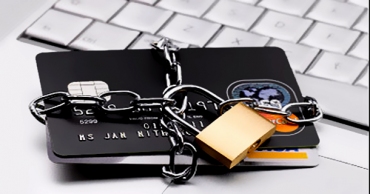* More and more of us are entering into cardholder-not-present transactions – so much so that they’re considered to be completely normal in the digital age, and have seen a 23 percent rise in recent years. Fraudsters are using low-tech methods such as ‘vishing’ (impersonating an authoritative bank figure over the phone, for example) to gain credit card information. This data can then be used effortlessly to buy products or services online, or over the phone.
* As a nation, we’re starting to become a bit nonchalant about online security, especially now that buying over the web is such a normal part of everyday life. In fact, many of us don’t even bother to set a secure password these days, with a quarter of us using birthdays or the names of friends and family, which can easily be guessed or sourced from discarded mail. We’re also guilty of picking one password and sticking to it, reusing the same combination for multiple accounts.
* As technology advances, so do the criminals. High tech fraudsters are beginning to target supposedly secure payment methods, such as chip and pin machines. Research has been conducted which suggests that it is possible to trick a credit card into accepting an incorrect pin, opening doors for many criminals to bypass measures that were implemented to try and reduce fraud levels.
Who Gets Scammed?
It’s very easy to sit back and say ‘I’ll never be scammed’, but the truth is that anyone can become the victim of fraud. Sometimes, you can be as vigilant and proactive as possible, and yet events outside of your control can lead to confidentiality breaches and the loss of personal information. Many businesses have suffered from hacking activity in recent years when customer credit card data has been stolen and used illegally. However, while anyone can be scammed, some individuals are more likely to become victims of fraud than others.
Those particularly vulnerable to fraud include:
* People who fail to keep track of their bank balances or credit rating.
* People who throw away junk mail containing personal details (shredding is better).
* Professional women aged between 25-34 who are specifically targeted.
* The over 50 population who may not recognise red flags.
What’s Being Done to Combat Fraudsters?
The good news is that, as a nation, we’re not simply sitting back and taking this abuse. The public are being encouraged to become more vigilant when sharing personal details, especially online, and resources are readily available which outline the advantages of security measures, such as transport layer security (TLS) and secure sockets layer (SSL). Banks are also making a difference by implementing measures, such as 3D secure technology, which provide a non-linear connection between consumer and supplier, making it more challenging for thieves to intercept data.
However, perhaps one of the most beneficial aspects in terms of tackling identity fraud is the introduction of third party identity protection services. These make it easier than ever before to monitor financial activity and keep track of credit card misuse and fraudulent credit applications. Reports suggest that half of all young people fail to check their monthly statements for unusual activity, and it is anticipated that misuse alerts delivered to an email inbox or mobile phone will be a significant step towards making the public more aware of their financial status.
Harry Price is a multi talented young man. In addition to freelance writing, he teaches english to foreign students and hes an artist.

